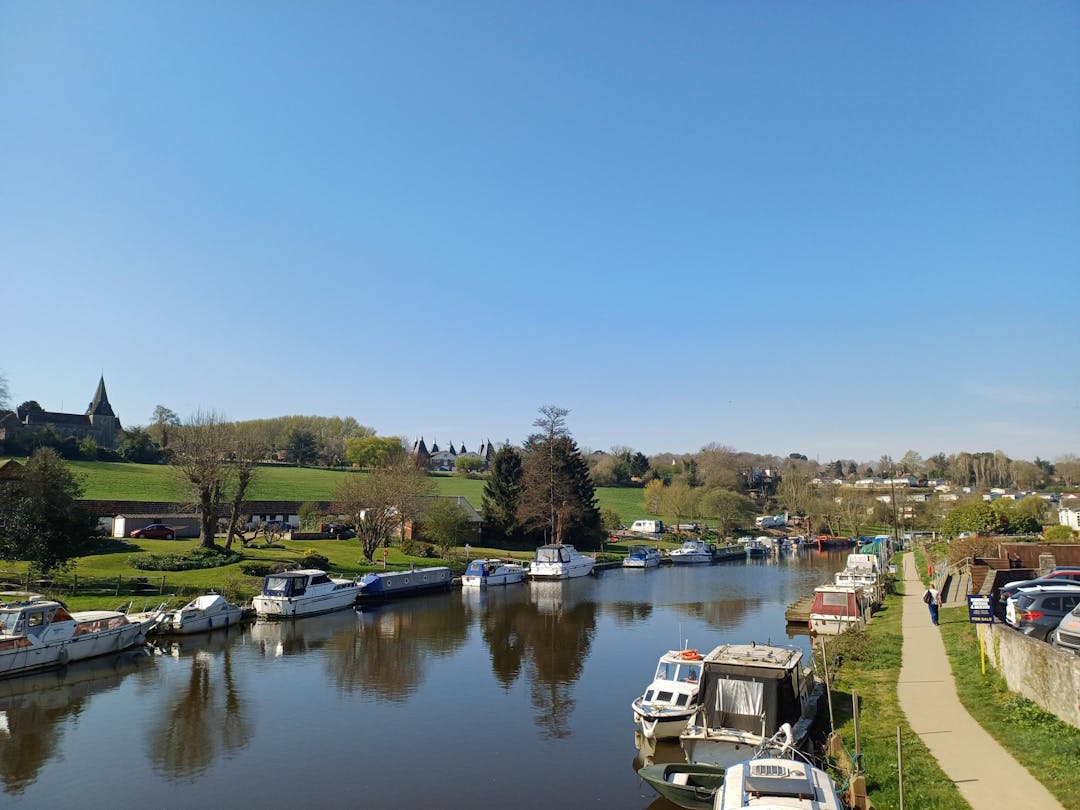East Farleigh Conservation Areas Management Plan
Consultation has concluded

What is a Conservation Area?
The Borough's 41 Conservation Areas have special value for local communities.
Conservation Areas are visible links with our past and offer attractive contrasts to modern environments, and so it is important to ensure that the special character of areas such as East Farleigh, are protected and sympathetic enhancements are encouraged. Local distinctiveness can provide a catalyst for regeneration and inspire well designed new development. The Council has a duty to review existing Conservation Area designations from time to time to ensure they are up to date and relevant.
The provisions for conservation area designation and management are set out in legislation. Conservation Area requirements are included in the Planning (Listed Buildings and Conservation Areas) Act 1990. Under section 71, local planning authorities should formulate and publish proposals for the preservation and enhancement of conservation areas and consult the public in the area in question, taking account of views expressed. Section 62 requires local planning authorities to review existing conservation areas, and to add more conservation areas. Section 72 states ‘special attention shall be paid to the desirability of preserving or enhancing the character or appearance of that area’.
Click here to read the draft plan.
Why we are consulting
The proposed Conservation Area Appraisal and Management Plan (known as CAAMP) recognises and summarises the significance and character of East Farleigh and provides a framework system to ensure that this character is protected or enhanced. The East Farleigh CAAMP follows the advice set out in Historic England’s guidance note: Conservation Area Appraisal, Designation and Management Historic England Advice Note 1 (Second Edition).
The significance of the East Farleigh Conservation Areas are closely tied to its relationship with the Medway River and the village's development during the 18th century, particularly with the rise of hop farming.
At the core of the Lower Road Conservation Area, around the church, historic remnants of the medieval village layout are still visible, including deep plots. Additionally, there are small scale domestic dwellings, such as workers' cottages, which highlight the contrasting character between the medieval period and the 18th century growth.
In Dean Street, the main core of buildings are still preserved intact, with a progressive growth perceptible but still maintaining a strong hamlet character.
We would like your feedback on the draft Conservation Area Appraisal and the proposed extension to the conservation area for East Farleigh before a final version is adopted (map). We want to hear from as many people and organisations as possible; including East Farleigh residents, and individuals who work in or visit.
How you can get involved
Review & Survey: Read the draft plan and take part in our short survey.
Public Exhibition: The Farleighs W.I Hall, 1-2 Forge Lane, East Farleigh, Maidstone ME15 0HG on 13 November 2025.
Officers will be available from 3pm to 6pm to discuss the draft plan and take your feedback.
Consultation closes:14 December 2025
What next
All responses to this consultation will be analysed and your feedback will be used to shape the final plan.
The final Management Plan for the East Farleigh Conservation Area is due to be considered by the Planning and Healthier Stronger Communities Policy Advisory Committee in February 2026.


 The significance of the East Farleigh Conservation Areas are closely tied to its relationship with the Medway River and the village's development during the 18th century, particularly with the rise of hop farming.
The significance of the East Farleigh Conservation Areas are closely tied to its relationship with the Medway River and the village's development during the 18th century, particularly with the rise of hop farming.